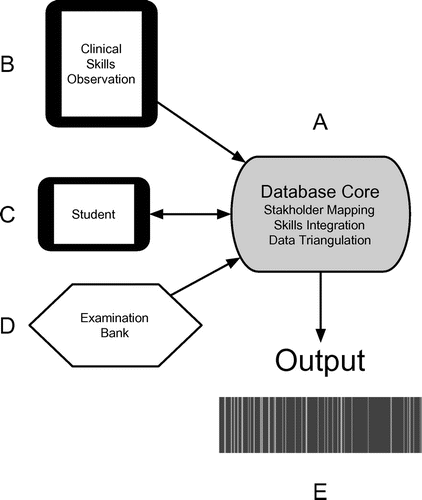Figures & data
Figure 1 Illustrative diagram of a complete theoretical structure to support continuous professional development. A central database core (A) is populated with the relevant stakeholder outcomes that are aligned in a ‘one to many relationship’. Each of the modules sitting off the data base is fully mapped to it, so that all data can be triangulated through the relevant stakeholder outcomes.

